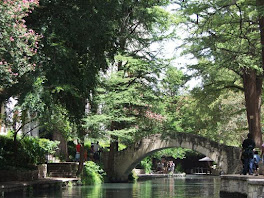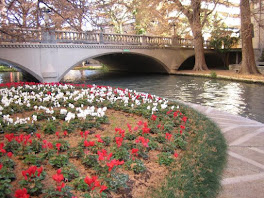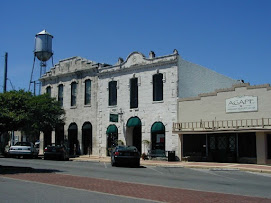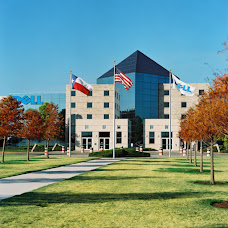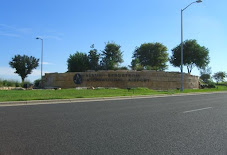A Jew Responds to the Muslim Call to Boycott All Things Jewish
Meyer M. Treinkman, a pharmacist, responded to the Muslim Call to Boycott All Things Jewish.
Iran's Supreme Leader Grand Ayatollah Ali Khamenei urged the Muslim World to boycott anything and everything originated with Jewish people.
In response, Meyer M. Treinkman, a pharmacist, out of the kindness of his heart, offered to assist them in their boycott as follows:
"Any Muslim who has Syphilis must not be cured by Salvarsan discovered by a Jew, Dr. Ehrlich. He should not even try to find out whether he has Syphilis, because the Wasserman Test is the discovery of a Jew.
If a Muslim suspects that he has Gonorrhea, he must not seek diagnosis, because he will be using the method of a Jew named Neissner.
"A Muslim who has heart disease must not use Digitalis, a discovery by a Jew, Ludwig Traube.
Should he suffer with a toothache, he must not use Novocaine, a discovery of the Jews, Widal and Weil.
If a Muslim has Diabetes, he must not use Insulin, the result of research by Minkowsky, a Jew.
If one has a headache, he must shun Pyramidon and Antypyrin, due to the Jews, Spiro and Ellege.
Muslims with convulsions must put up with them because it was a Jew, Oscar Leibreich, who proposed the use of Chloral Hydrate.
Arabs must do likewise with their psychic ailments because Freud, father of psychoanalysis, was a Jew.
Should a Muslim child get Diphtheria, he must refrain from the ‘Schick reaction which was invented by the Jew, Bella Schick.
"Muslims should not permit treatment of ear and brain damage, by the work of Jewish Nobel Prize winner, Robert Baram.
They should continue to remain crippled by Infantile Paralysis because the discoverer of the anti-polio vaccine is a Jew, Jonas Salk.
"Muslims must refuse to use Streptomycin and continue to suffer Tuberculosis because a Jew, Zalman Waxman, invented the wonder drug against this killing disease.
Muslim doctors must discard all discoveries and improvements by dermatologist Judas Sehn Benedict, or the lung specialist, Frawnkel, and of many other world renowned Jewish scientists and medical experts.
"In short, good and loyal Muslims properly and fittingly should be proud to obey the Islamic boycott." by the way, don't call for a doctor on your mobile phone because the mobile phone was invented in Israel by a Jewish engineer.
Meanwhile I ask, what medical contributions to the world have the Muslims made to civilization?
The Global Islamic population is approximately 1,200,000,000; that is ONE BILLION TWO HUNDRED MILLION or 20% of the world's population.
They have received the following Nobel Prizes:
Literature:
1988 - Najib Mahfooz
Peace:
1978 - Mohamed Anwar El-Sadat
1990 - Elias James Corey
1994 - Yaser Arafat:
1999 - Ahmed Zewai
Economics:
(zero)
Physics:
(zero)
Medicine:
1960 - Peter Brian Medawar
1998 - Ferid Mourad
TOTAL: 7
The Global Jewish population is approximately 14,000,000; that is FOURTEEN MILLION or approximately 0.02% of the world's population.
They have received the following Nobel Prizes:
Literature:
1910 - Paul Heyse
1927 - Henri Bergson
1958 - Boris Pasternak
1966 - Shmuel Yosef Agnon
1966 - Nelly Sachs
1976 - Saul Bellow
1978 - Isaac Bashevis Singer
1981 - Elias Canetti
1987 - Joseph Brodsky
1991 - Nadine Gordimer World
Peace:
1911 - Alfred Fried
1911 - Tobias Michael Carel Asser
1968 - Rene Cassin
1973 - Henry Kissinger
1978 - Menachem Begin
1986 - Elie Wiesel
1994 - Shimon Peres
1994 - Yitzhak Rabin
Physics:
1905 - Adolph Von Baeyer
1906 - Henri Moissan
1907 - Albert Abraham Michelson
1908 - Gabriel Lippmann
1910 - Otto Wallach
1915 - Richard Willstaetter
1918 - Fritz Haber
1921 - Albert Einstein
1922 - Niels Bohr
1925 - James Franck
1925 - Gustav Hertz
1943 - Gustav Stern
1943 - George Charles de Hevesy
1944 - Isidor Issac Rabi
1952 - Felix Bloch
1954 - Max Born
1958 - Igor Tamm
1959 - Emilio Segre
1960 - Donald A. Glaser
1961 - Robert Hofstadter
1961 - Melvin Calvin
1962 - Lev Davidovich Landau
1962 - Max Ferdinand Perutz
1965 - Richard Phillips Feynman
1965 - Julian Schwinger
1969 - Murray Gell-Mann
1971 - Dennis Gabor
1972 - William Howard Stein
1973 - Brian David Josephson
1975 - Benjamin Mottleson
1976 - Burton Richter
1977 - Ilya Prigogine
1978 - Arno Allan Penzias
1978 - Peter L Kapitza
1979 - Stephen Weinberg
1979 - Sheldon Glashow
1979 - Herbert Charles Brown
1980 - Paul Berg
1980 - Walter Gilbert
1981 - Roald Hoffmann
1982 - Aaron Klug
1985 - Albert A. Hauptman
1985 - Jerome Karle
1986 - Dudley R. Herschbach
1988 - Robert Huber
1988 - Leon Lederman
1988 - Melvin Schwartz
1988 - Jack Steinberger
1989 - Sidney Altman
1990 - Jerome Friedman
1992 - Rudolph Marcus
1995 - Martin Perl
2000 - Alan J. Heeger
Economics:
1970 - Paul Anthony Samuelson
1971 - Simon Kuznets
1972 - Kenneth Joseph Arrow
1975 - Leonid Kantorovich
1976 - Milton Friedman
1978 - Herbert A. Simon
1980 - Lawrence Robert Klein
1985 - Franco Modigliani
1987 - Robert M. Solow
1990 - Harry Markowitz
1990 - Merton Miller
1992 - Gary Becker
1993 - Robert Fogel
Medicine:
1908 - Elie Metchnikoff
1908 - Paul Erlich
1914 - Robert Barany
1922 - Otto Meyerhof
1930 - Karl Landsteiner
1931 - Otto Warburg
1936 - Otto Loewi
1944 - Joseph Erlanger
1944 - Herbert Spencer Gasser
1945 - Ernst Boris Chain
1946 - Hermann Joseph Muller
1950 - Tadeus Reichstein
1952 - Selman Abraham Waksman
1953 - Hans Krebs
1953 - Fritz Albert Lipmann
1958 - Joshua Lederberg
1959 - Arthur Kornberg
1964 - Konrad Bloch
1965 - Francois Jacob
1965 - Andre Lwoff
1967 - George Wald
1968 - Marshall W. Nirenberg
1969 - Salvador Luria
1970 - Julius Axelrod
1970 - Sir Bernard Katz
1972 - Gerald Maurice Edelman
1975 - Howard Martin Temin
1976 - Baruch S. Blumberg
1977 - Roselyn Sussman Yalow
1978 - Daniel Nathans
1980 - Baruj Benacerraf
1984 - Cesar Milstein
1985 - Michael Stuart Brown
1985 - Joseph L. Goldstein
1986 - Stanley Cohen [& Rita Levi-Montalcini]
1988 - Gertrude Elion
1989 - Harold Varmus
1991 - Erwin Neher
1991 - Bert Sakmann
1993 - Richard J. Roberts
1993 - Phillip Sharp
1994 - Alfred Gilman
1995 - Edward B. Lewis
1996- Lu RoseIacovino
TOTAL: 129
Perhaps the world's Muslims should consider investing more in education and less in blaming the Jews and the rest of humanity for all of their problems.
Muslims must ask 'what can they do for humankind' before they demand that humankind respects and supports them or tolerates their evil to humanity.
Monday, December 11, 2017
Saturday, December 3, 2016
Usun Apau Plieran
by jpesua'
Usun Apau Plieran is a remote abandoned Kenyah Jamuk, Badeng and Lepu Aga' village settlement in 1860, Belaga district. To be exact, Usun Apau Plieran is located at the upstream of Sungai Plieran and Sungai Tiyut. The highest peak that close to this area are Bukit Busing 1300m and Mudung Batu Bora about 1450m. There are a few old longhouse sites at this area such as Long Metalon, Long Ampan Aing (Sungai Abanang), Long Bora (Sungai Bora), Long Taa, Ka Laeh, Lidung Jelo and Lolau Mabo.
Travel to Plieran involves a six hours 4WD drive from Bintulu to Belaga, using the Bintulu-Bakun trunk road and look for the junction to Murum Dam from the Murum Dam junction it takes about 70 km to the Metalun new Penan resettlement.
History
As requested by the Baram Resident officer Dr. Charles Hose (1891), in 1893 some of the Kenyah Badeng (the Madangs) of Plieran migrated to Baram headwaters in Long Teboken, Teboken river and two years later after harvest festival they moved downriver to Long Benalui, Data river (tributary to Silat river) where Dr. Charles Hose, the Baram Resident organised an expedition and visited their village at the foot of Mudong Alan, Long Benalui in November 3, 1898 (to what he called 'the Madangs country'). The remaining who refused to migrate to Baram, finally at this point a few of them turned back to Lidung Jelo, Long Benampan (Sungai Luar), Long Malim, Long Petan and Long Ca, Sungai Danum in 1918 to join the other Kenyah Badeng (the Madangs) groups in Danum. The exact location of their settlements in East Usun Apau and upper Rejang was not stated in Charles Hose's journal because he never visit them in upper Rejang. He only visited them in 1898 when some of them have moved from East Usun Apau to remote Upper Silat (Long Benalui, Data River (tributary of Silat river) near Mudong Alan). The oral history from our ancestors were the single source of truth about a few settlement areas.
"Hose's progress was delayed by endless palavers and by rivers in spate from the heavy rain in the mountains. Finally, his fotilla of canoes entered the Silat, the last major tributary of the Baram, where they were met by the emissaries from the Madang. Just who the Madang were remains something of a mystery. Indeed they managed to have hostile relations with all their neighbours and seem to have moved about repeatedly in search of an isolated valley. Iban depredations had only recently caused them to move from the headwaters of the Rejang, to the East of Usun Apau, and so into the remote upper Silat River (Hose and McDougall 1912:II:28I-92)"
Lidung Jelo, at Usun Apau Plieran (Pliran / Plieran / Pleiran / Peliran) is a fully abandoned Kenyah Badeng populated old village settlement in 1920s, Belaga district. Plieran holds a very special place in the hearts of many Badeng Madangs. We owe it to them and to future generations to conserve and enhance its natural environment and cultural assets. These places were visited in the late 1930s, 1940s, 1977, 1980s, 1989 and 2006 by a few groups of Kenyah Badeng to verify the old longhouse sites as well as the ancient burial sites. Due to the great pressure from the Baram Resident Officer, in 1891, practically all the inhabitants of the Baram had accepted the Rajah's government and acknowledged it by the payment of some tax, called door-tax of two dollars per family. The Kenyahs, do not feeling themselves needed of any such protection, were less ready to accept the Resident's proposals. First of all, they desired peace, or at any rate less warfare, and it was possible to convince them that this result might be achieved by pointing to other districts such as the Rejang and Jenalong (Tubau), with whose affairs they had some acquaintance. Most of them eventually start to move from Lidung Jelo go upstream Plieran and entered the Medang river (a tributary of the hulu Plieran river) adjacent to the river that flows into the Teboken river then Data river and settled at the confluence of the so-called Long Teboken. Three (3) years later they went to Long Benalui (not far from Mudong Alan) another tributary to Data river and not far from the Silat river in Baram district.
During our recent expedition to village site in Lidung Jelo, Usun Apau Plieran, we found more than three upright piles (a real hardwood) of old houses in a straight line still remained in the ground.
Geography
The Mount of Batu Bora is one of two peaks of a mountain ridge which runs for 2.5 kilometres (1.5 miles) just northwest of the abandoned Kenyah settlements along the Plieran river, in this area called the Plieran Valley and on the northwest is Apau Beduk. The peak to its north is called Mudung Batu Bora, at 1450 metres (4,757 feet), while the peak to the far north is the Mount Selidang , at 1410 m (4,493 feet). The ridge acts as a watershed, and its eastern side is the beginning of the Tiang and Weng river and to the south is Plieran river.
Location
The Usun Apau Plieran Highlands is a series of beautiful mountain lying slightly over 820m above sea levels (asl) and flanked by jungle-covered peaks rising to more than 1,4000m. Bukit Busing around 1,300m and Mudung or Bukit Batu Bora around 1,400m are the highest peaks not far from this area.
To be exact, Usun Apau Plieran is located at the Upper Plieran (Sungai Plieran) and Sungai Tiyut (tributary of Plieran river).
There are a few old longhouse sites at these areas such as Long Ampan Aing (to the western ear, Ampan Aing in Kenyah enunciation sounded like Abanang or Ampan Ayng, hence Sungai Abanang or Abanine), Long Bora (Sungai Bora), Long Taa, Ka Laeh, Lolau Mabo and Lidung Jelo. Long Ampan Aing and Lidung Jelo were the most important of the Kenyah Badeng settlements in Plieran in early 1820s.
You will easily notice a variety of local fruit trees along the Plieran river bank with the most common being local fruit such as durian, rambutan, pulasan, bamboo, terap, langsat, 'eman', 'nanga' or sago palm (Eugeissona utilis), 'mali' and 'bua' alim' (wild mango) when you take a boat ride from Plieran bridge at Long Ampan Aing, Long Bora, Long Taa, Ka Laeh to Lidung Jelo (upstream). All these crops were planted by the Kenyah Badeng people in 1820's-1900's the Penan in Plieran acknowledged that.
Lidung Jelo
Discover what it’s like in Lidung Jelo, Ka Laeh and Long Ampan Aing with local Kenyah touring some of the old longhouse’s sites famous landmarks and history. Lidung Jelo (also known as Lidong Jelor / Jilor) is a completely remote Kenyah's longhouse settlements deep into the mountainous interior near the border with North Kalimantan and located by the Plieran river bank, Belaga division of Sarawak. There are many local fruit trees which still grows wild in these old settlements area. This place is important because it is one of the earlier and biggest settlements of Badeng/Madangs that is used to be their last stronghold, culture, heritage and a thriving center of Kenyah life as well as a major migration route from Belaga to Baram and vice versa at the very heart of Usun Apau Plieran Highlands. It takes about 35 minutes boat ride to get to Lolau Mabo from Lidung Jelo, which is located at upper Plieran.
Mudung Batu Bora
The Batu Bora mountain range is a sandstone range lying between the Plieran river and the great Usun Apau Plateau to the north, or about 3.5 kilometres from the Plieran river to the south. The main Batu Bora mountain is 1,500m high and dominates the upper Plieran valley. The mountain forms a great massif. While on the south-east of the range is the secondary formation of Mudung Batu Bora, a great ridge 1,300m high with a series of jagged rocks sticking out along the top like teeth. Batu Bora is also known by the Kenyah name as Mudung Bora, which refers to white (white as cotton) with low clouds hanging over the mountain. A day-trip climbs to the 1,500m Mudung Bora summit can be organised and the old route will give climbers a taste of the Plieran Range terrain to offers a great challenge for mountain climbing enthusiasts . It is possible to climb Mudung Batu Bora, but this is for planned expedition, experience guides, mountaineering gears and a few porters will be needed.
Climate
The mountainous inland region extends from Sarawak's watershed boundary with East/North Kalimantan. This region is generally over 725 metres above sea levels with substantial areas exceeding 1,400 metres. Stand about 2,378 feet above sea level, the climate in Apau Plieran is quite pleasant, owing to its medium high elevation, it can become quite chilly in the morning and the evening. The temperature in the upper Plieran is usually about 3-4 degrees Celsius lower than the temperature in the lowland area. Average temperature ranges from 20 to 26 °C (68 to 78 °F) with the lowest temperatures between November and February. The temperature seldom exceeds 29 °C (84 °F) even during the warmest part of the year.
How to get there
Usun Apau Plieran is accessible from Bintulu by 4WD along the logging road. Travel to Usun Apau Plieran involves a six (6) hours 4WD drive from Bintulu to Belaga, using the Bintulu-Bakun trunk road and the road to Bakun / Murum Dam. From the Murum's Dam junction passing along the logging road and palm oil plantation roads, it takes about 2–3 hours to reach the Usun Apau Plieran the Badeng Madangs Highlands or the estimated distance from Murum Dam junction to Usun Apau is about 60 KM.
A variety of other treks included 4-5 days long trails leading to North Kalimantan (with overnight stops in the rainforest nearby Upper Hulu Plieran river, Medang river and Upper Iwan river).
References
- Sketch map of Baram District: Brunei and Sarawak in Northwestern Borneo. Map ref: SEAS3986 and SEAS4194, By Charles Hose. (1893/1900)
- http://www.themaphouse.com/search_getamap.aspx?id=109316&ref=SEAS3986
- http://www.themaphouse.com/search_getamap.aspx?id=113865&ref=SEAS4194
- Longhouse and jungle: an expedition to Sarawak Guy Arnold (1959) p.122 (map), p.123, p.124
- IN THE HEART OF BORNEO: Geographical Journal London By Charles Hose p. 40-p. 52 (1900)
- The Usun Apau Plateau Guy Arnold p. 167, p. 170, p. 172 (the map - figure 3), p. 173, p. 175 (a.excavations), p. 176
- Interior of Borneo: Oamaru Mail, Volume XXXVIII, Issue 10471, 2 June 1910, Page 1 Dr. Charles Hose
- NW. Borneo, Sarawak: near the Madang Country (Nov.), between the headwaters of the Batang Kayan, Rejang and Baram rivers; Silat River; Lata (Data) River; Long Purau (1898) Dr. Charles Hose
- The Sarawak Museum Journal, Volume 41 1990 p. 43, p. 44, p. 46
- The Pagan Tribes of Borneo (a Description of Their Physical Moral & Intellectual Condition with Some Discussion of Their Ethnic Relations) (Dr. Charles Hose with William McDougall) (1912)
- The Life of the Longhouse: An Archaeology of Ethnicity Peter Metcalf p. 263 & p. 264 (The Madang Country / The Madang People)
- Maps of Malaysia and Borneo: Discovery, Statehood and Progress: The maps of the interior 1892 p.179 By Fr Durand, Richard Curtis
- Innermost Borneo: Ten Years' Exploration & Research Author(s)": Tom Harrisson Source: The Geographical Journal, Vol. 125, No. 3/4 (Sep-Dec, 1959), pp. 299–311, p. 303, p. 306
- The Life of the Longhouse: An Archaeology of Ethnicity " By Peter Metcalf pp. 263–264
- Headhunters: The Search for a Science of the Mind By Ben Shephard
Thursday, January 7, 2016
Welcome to 2016..
New beginnings, fresh starts, reaffirmations of love and promises for a brighter future all come to mind as we ring in a New Year. There are the superficial, yet purposeful, promises we make to ourselves.
We resolve to get in shape, lose weight, improve career paths, and the like. Then, there are the heartfelt promises we make to others, whether aloud or in our minds. We want to care more, express love more, reverse bad feelings in old relationships or seek out new loving relationships.
We try our very best to put these desires into words. Counting our blessings and wishing you more to come. Hope you enjoy your life.
A new year is like a blank book, and the pen is in your hands. It is your chance to write a beautiful story for yourself this year. Happy New Year everyone!
We resolve to get in shape, lose weight, improve career paths, and the like. Then, there are the heartfelt promises we make to others, whether aloud or in our minds. We want to care more, express love more, reverse bad feelings in old relationships or seek out new loving relationships.
We try our very best to put these desires into words. Counting our blessings and wishing you more to come. Hope you enjoy your life.
A new year is like a blank book, and the pen is in your hands. It is your chance to write a beautiful story for yourself this year. Happy New Year everyone!
Wednesday, October 21, 2015
Lidung Jelo Usun Apau Plieran
These are some pics that I want to share with you during
our recent visit to Usun Apau Plieran
Southern Dulit range on the way to Plieran
Apau Beduk close to Plieran Valley
Tiyut river, Upper Plieran
Lidung Jelo, Plieran
Plieran bridge #2; Dmax and Hilux
Plieran river at Lidung Jelo
Mudung Batu Bora from south
Mudung Batu Bora
logging road heading to Plieran
Subscribe to:
Comments (Atom)
beach
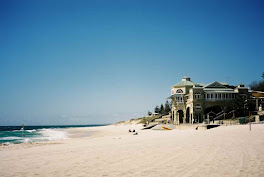
cottesloe beach restaurant
City of Perth
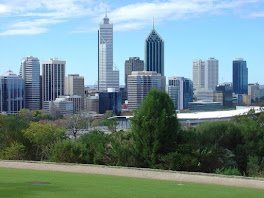
view from King's park
Houston TX
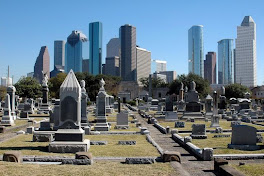
San antonio
